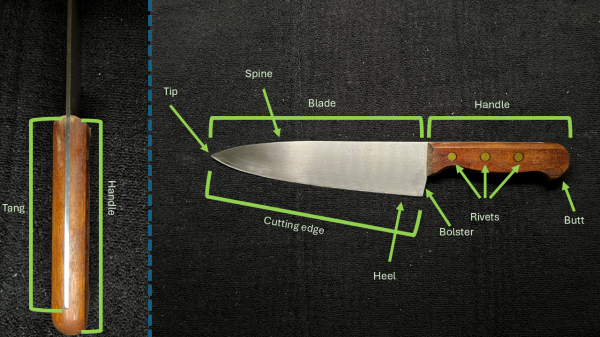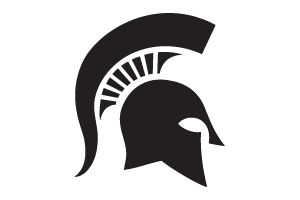
The Anatomy of a Knife
September 15, 2025 - Mary Donaldson
Knowing the anatomy of a knife can help to select the right one for the job. A sharp knife is always the best knife, as it can enhance safety, control, efficiency, and result in better food presentation. Other considerations when using knives are knowing how to handle it properly, as not to injure oneself, and what surface to use when cutting food.
Here are the parts of a knife with information on how they affect doing different kitchen tasks.
Blade and heel
The two easiest parts to identify on the knife are the blade and the handle. At the end of the knife, the end with the blade, you have the sharp cutting edge, and then the opposite side is called the spine. The very end of the knife blade is called the tip. The part of the blade closest to the handle is considered the heel.
Blade and tang
The picture on the left shows the knife from above. Notice that the metal of the blade extends into the handle. That is called the tang. For knives with a full tang, the balance tends to be better than a partial or no tang. The knife can be thought of as a lever, like a teeter-totter. It is the fulcrum point on a teeter-totter and also a knife where the weight of the blade and the weight of the handle equal each other. A well-balanced knife will make the work much easier.
Bolster
On the opposite end of the tip is the butt. The rivets hold the handle and the tang together. The bolster guards the hand from slipping off the handle when chopping up and down, or if slicing back and forth from the tip to the heel. The bolster needs to be wide enough to allow for the hand to clear between the handle and the cutting surface. A bolster that is too small can be very uncomfortable and the knuckles may hit the cutting board before the knife blade when chopping.
Weight Class
Not part of the anatomy, per se, the weight of the knife can help to cut through thick or tough items but may cause the hand and arm to tire quickly. A lightweight knife may cause injury to the hands if it is a struggle to get the blade through the food. A knife with a sharp blade and the appropriate weight will do the work. The hands should only guide the knife while providing minimal effort to push the blade through the food.
The saying, work smart, not hard, works better for knives as: work sharp, not hard.
MSU Extension also recommends learning about the different types of cutting boards and how to keep them from contaminating other food.



 Print
Print Email
Email
